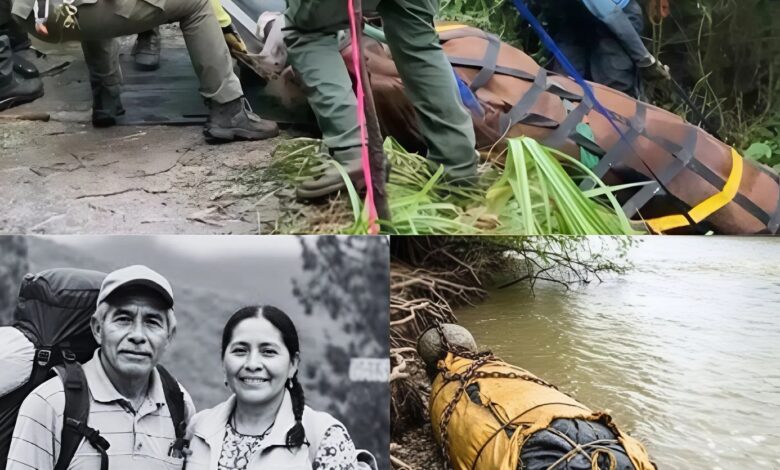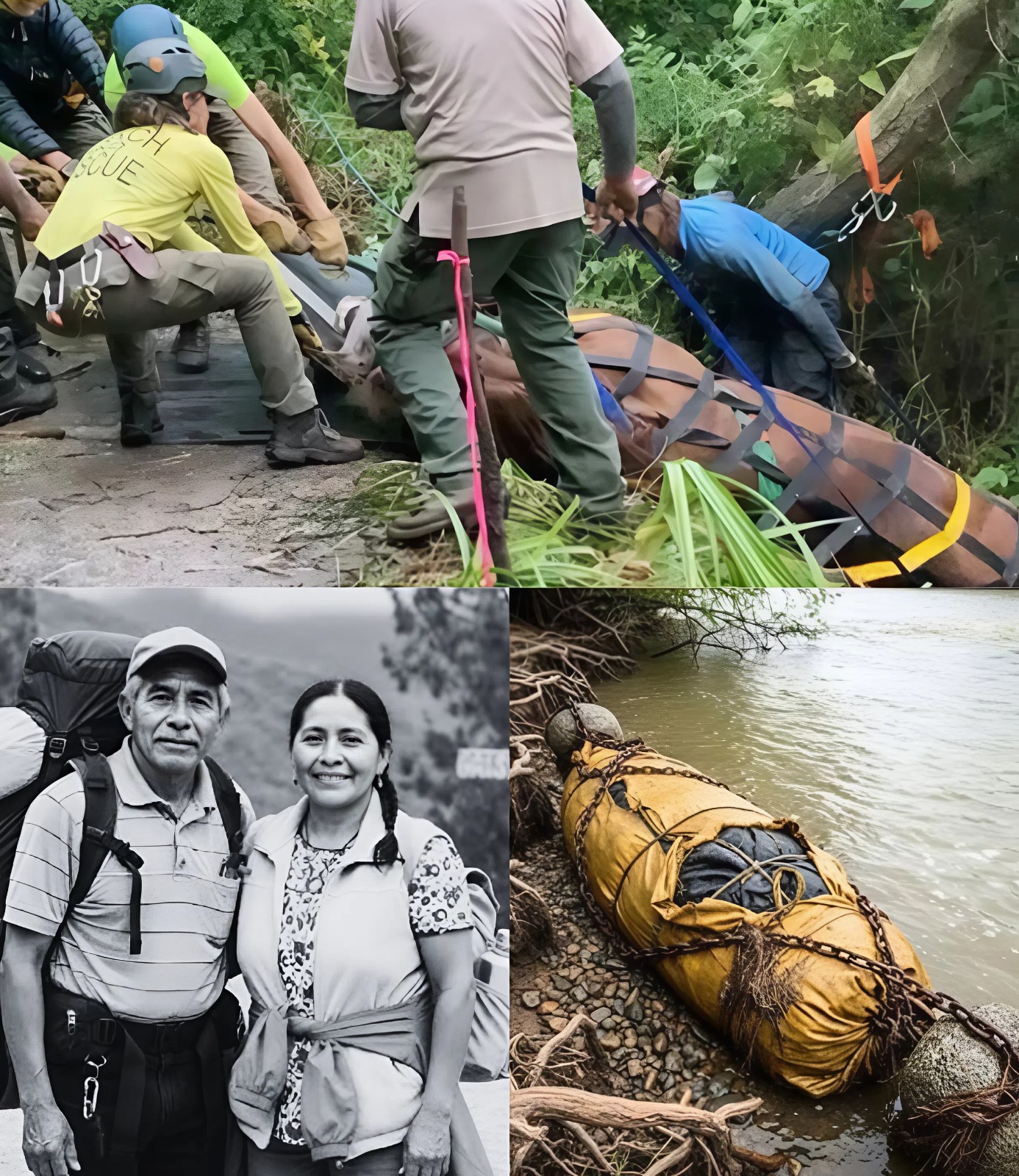TQ. For five silent years, a single juniper clung to the Tampaón River’s edge—its roots hiding the one secret the water would never release.

It was never just a tree.
For half a decade, the lone juniper that leaned over the Tampaón River in San Luis Potosí stood like a sentinel carved from silence. Its roots coiled deep into the mud — ancient, sinewy, almost defiant — gripping a patch of riverbank the current seemed to avoid. Through five monsoon seasons, the tree remained untouched while entire sections of shoreline collapsed into the rushing brown water. To the villagers, that resilience became a kind of quiet superstition. To scientists, it became an anomaly.
And now, to both, it has become a mystery — one that’s rewriting how they understand the land, and perhaps, how the land understands them.
A Survivor in a Drowning Valley
When the floods came in the autumn of 2019, they came without mercy. Rain pounded the valley for ten days straight, and the Tampaón — usually calm, almost glasslike — rose more than six meters. Livestock drowned. Houses were swallowed whole. Families climbed onto rooftops, clutching children and rosaries as the river’s roar drowned out their prayers.

When the storm finally passed, and the villagers returned to survey what was left, they saw ruin — except for one small, defiant image: a single juniper standing unbroken on a newly carved bend of the river.
“It was strange,” recalled María Hernández, now 68, who lived a few hundred meters away. “Everything else was gone. The bridge, the old fig trees, even the stones from my garden. But that tree — it stood like it had roots in heaven.”
In the months that followed, it became a local symbol of endurance. People brought offerings: candles, coins, sometimes bottles of water. But the admiration was mixed with unease. Fishermen began to complain that their nets came up torn near the tree. Children claimed they heard whispers at dusk — a soft, rhythmic murmur rising from the water.
“It sounded like breathing,” one of them said.
Science Arrives — and Stumbles Into Myth
In 2024, a research team from the Universidad Autónoma de San Luis Potosí arrived to study erosion patterns and vegetation resilience along the Tampaón. Led by hydrologist Dr. Tomás Aguilar, the group used sonar and ground-penetrating radar to analyze the subsurface around the tree.
Their readings revealed something astonishing: directly beneath the juniper’s root system lay a circular stone structure — symmetrical, geometrically precise, and unlike any known geological formation in the region.
“At first, we thought it was an old bridge foundation,” Aguilar said in an interview. “But when we began excavating, we realized the stones were too finely carved, too deliberate. Someone — or something — built this.”
What they uncovered next blurred the line between science and the sacred. Beneath the outer stones lay a sealed clay urn containing an obsidian mirror, its surface perfectly preserved, surrounded by fragments of ceremonial figurines. Radiocarbon testing dated the artifacts to roughly 600 BCE — predating known Huastec settlements by nearly a millennium.
The site, INAH officials now believe, may represent a proto-Huastec water shrine, built to honor spirits believed to dwell in the currents.
But in the field journals recovered after the excavation was suspended, Dr. Aguilar wrote something far more unsettling:
“The juniper’s roots have fused into the stone structure, wrapping around it as if it were alive — as if the tree and the shrine were one organism. It’s as if the earth itself decided to keep the memory hidden.”
The Day the River Spoke
On June 14, 2024, when the urn was finally opened in a controlled dig tent, witnesses reported that the river seemed to change color — darkening to a deep green, almost metallic hue. For hours, the current slowed to an unnatural calm. Villagers gathered by the banks, crossing themselves.
“We heard a hum,” said local farmer Javier Cruz. “Not from the machines. From the water. Like a low song.”
Aguilar’s team dismissed it as superstition — perhaps the reflection of light from disturbed sediment. But several electronic sensors malfunctioned at that exact moment, recording unexplained electromagnetic spikes.
Within 48 hours, strange phenomena multiplied. Birds stopped nesting near the site. The water’s pH shifted. And the juniper — which had thrived for decades — began to crack along its trunk, as though splitting under invisible pressure.
“We weren’t just digging into the past,” Aguilar later told reporters. “We were waking it.”
A History Buried in Water and Blood
To understand why this discovery carries such weight, you have to know what the Tampaón means to those who live along it. Long before Spanish maps renamed it, the river was known to the ancient Huastecs as Tam-Paon, “the water that remembers.”

According to regional folklore, each bend of the river is said to contain a “memory point” — a place where the spirits of drowned souls linger, merging with the current. To ensure peace between the living and the river’s memory, the ancestors would plant trees along the banks — most often junipers or ceibas — as guardians.
“The people believed the river was alive, and that it listened,” said folklorist Sofía Juárez, who has studied Huastec oral traditions for two decades. “If you angered it — by taking more fish than you needed, or by disturbing its stones — it would take something back. The tree was its translator, its anchor in the human world.”
What the archaeologists unearthed, she argues, is not just an ancient temple, but an ancient warning: “The shrine wasn’t built for the river. It was built to contain it.”
When the Lightning Struck
On August 23, 2024, a lightning storm rolled through the valley. At 2:17 a.m., a bolt struck the juniper directly. Villagers described the sound as “a scream of wood and thunder.” The next morning, the tree’s trunk was split clean down the center — yet it didn’t burn.
Within hours, the Tampaón began to rise again. Sensors from the hydrology station recorded a sudden, unexplainable surge from beneath the ground — not from rainfall, but from an internal pressure source.
Excavation equipment was swept away. One assistant archaeologist narrowly escaped being pulled under when the newly exposed cavity beneath the site collapsed into the river. The project was immediately suspended.
When INAH officials returned days later, the hole had refilled with silt. Only fragments of limestone and broken roots remained. The juniper, though split, was still standing — half-dead, half-living.
Faith, Science, and the Fear of Knowing
Today, the site is closed to the public, fenced off by government order. Officially, the closure is for safety and preservation. Unofficially, no one wants to disturb it again.
The academic community remains divided. Some see the events as exaggerated local legend — coincidence amplified by fear. Others believe the juniper represented a unique biological anomaly intertwined with an archaeological phenomenon.
But among the villagers, explanations are unnecessary. They say the river has already spoken.
“Some truths,” Father Rojas said quietly during a recent mass, “are not meant to be found. They find us.”
The church in Tamasopo now holds an annual candlelight vigil at the river’s edge — not for the dead, but for the living, who still drink from its waters and dream of the voices it carries.

The Roots That Remember
Standing before the fractured juniper today, its bark silvered by age and lightning, one can’t help but feel the weight of what it has witnessed. Beneath it lie stones arranged by forgotten hands; above it, clouds that move like thoughts drifting through centuries.
The air there is different — heavier, somehow aware. The river moves more slowly, circling the bend as if reluctant to leave.
When asked what he believes the tree was protecting, Dr. Aguilar — who has since left fieldwork entirely — paused for a long moment before answering.
“The truth,” he said finally, “is that every river carries its own memory. We just happened to dig where the earth still remembers how to speak.”
He smiled then, almost sadly. “And maybe we should have let it stay silent.”
At twilight, the villagers say, the river glows faintly under the moon — not with reflection, but with remembrance. The juniper, though wounded, still stands, its roots deep in soil mixed with bone, stone, and forgotten prayers.
Perhaps it endures because it has no choice. Perhaps because the past itself refuses to drown.
Whatever the reason, the Tampaón keeps flowing — slow, watchful, and eternal — as if guarding a secret it will only reveal when the world is ready to listen.



